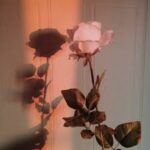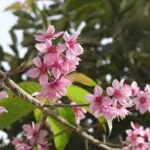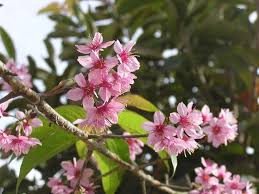 Flowers have long been a source of inspiration for musicians, artists, and performers across various genres and disciplines. Their beauty, symbolism, and fragrance often serve as metaphors or visual motifs, enriching compositions and performances with deeper meaning. Let’s explore the profound impact of flowers in the realms of music and performing arts:
Flowers have long been a source of inspiration for musicians, artists, and performers across various genres and disciplines. Their beauty, symbolism, and fragrance often serve as metaphors or visual motifs, enriching compositions and performances with deeper meaning. Let’s explore the profound impact of flowers in the realms of music and performing arts:
**1. Symbolism and Metaphor:**
Flowers are rich in symbolism, representing a wide range of emotions and concepts in music and performing arts. For example, the rose is frequently used as a metaphor for love and passion in lyrical compositions, while lilies symbolize purity and transcendence in choral works.
**2. Visual Aesthetics:**
In theatrical productions and dance performances, flowers are often used to enhance visual aesthetics and set the mood. Elaborate floral arrangements or backdrops can transform a stage, creating a lush, immersive environment that complements the narrative or choreography.
**3. Musical Compositions:**
Many classical composers have drawn inspiration from flowers, incorporating their imagery into symphonic works and operatic compositions. Debussy’s “The Sunken Cathedral” and Mussorgsky’s “Pictures at an Exhibition” are notable examples where flowers play a significant role in evoking vivid musical imagery.
**4. Folklore and Tradition:**
In folk music and traditional performances, flowers are deeply intertwined with cultural narratives and customs. Songs and dances celebrating seasonal blooms or harvest festivals reflect the close connection between floral symbolism and local traditions.
**5. Visual Arts and Design:**
Floral motifs are ubiquitous in visual arts, from paintings and sculptures to costume design and stage sets. Artists like Vincent van Gogh and Georgia O’Keeffe have explored the intricate details and vibrant colors of flowers, capturing their essence on canvas.
**6. Opera and Ballet:**
In opera and ballet, flowers often serve as props or thematic elements that enhance storytelling and characterization. For instance, Tchaikovsky’s “The Nutcracker” features the iconic Waltz of the Flowers, a dazzling musical sequence that underscores the magic and whimsy of the ballet.
**7. Floral Festivals and Events:**
Musical performances and theatrical productions frequently coincide with floral festivals and events, where the natural beauty of flowers becomes an integral part of the artistic experience. These occasions celebrate the harmonious relationship between nature, culture, and creativity.
**8. Contemporary Interpretations:**
In modern music and experimental art forms, flowers continue to inspire innovative interpretations and interdisciplinary collaborations. Floral installations, live performances in botanical gardens, and multimedia presentations explore new ways of integrating flowers into contemporary artistic expressions.
**9. Emotional Resonance:**
Beyond their visual allure, flowers evoke emotional responses that resonate with audiences. Whether used as props, themes, or symbolic motifs, flowers contribute to the emotional depth and sensory experience of musical and performing arts presentations.
**10. Cross-Cultural Significance:**
Flowers transcend cultural boundaries, resonating with audiences worldwide through their universal appeal. They serve as a common language of beauty and inspiration, fostering connections and understanding across diverse artistic traditions.
In conclusion, the influence of flowers in music and performing arts is profound and multifaceted, shaping creative expressions and enriching cultural experiences. Their enduring presence underscores the timeless allure of nature and the endless possibilities for artistic interpretation and expression.
Certainly! Here’s Part 2 of the article discussing the influence of flowers in music and performing arts:
—
**Part 2: Flowers and Their Influence in Music and Performing Arts**
Flowers have a profound and multifaceted impact on the world of music and performing arts, enriching artistic expressions with their symbolism, beauty, and emotional resonance. Let’s delve deeper into how flowers influence various aspects of these creative disciplines:
**1. Visual Inspiration in Music Videos:**
In contemporary music videos, flowers are often used as visual elements to enhance storytelling and evoke mood. Artists integrate floral imagery into their videos, creating captivating visual narratives that complement the lyrical content of their songs.
**2. Floral Symbolism in Songwriting:**
Songwriters frequently use flowers as symbolic motifs to convey complex emotions and themes. Whether depicting growth, loss, or renewal, floral references in lyrics add depth and resonance to musical compositions across genres.
**3. Concert and Event Decor:**
Flowers play a pivotal role in concert and event decor, transforming performance venues into enchanting spaces that captivate audiences. From grand floral arrangements on stage to delicate table centerpieces, flowers enhance the ambiance and elevate the overall aesthetic of live performances.
**4. Artistic Expression in Dance:**
In dance choreography, flowers inspire movements that mirror their graceful forms and delicate textures. Dancers interpret floral themes through fluid motions and expressive gestures, embodying the natural beauty and symbolism of flowers in their performances.
**5. Cross-Cultural Symbolism:**
Different cultures attribute unique symbolism to flowers, influencing musical compositions and dance forms. For instance, the sakura (cherry blossom) holds profound significance in Japanese music and traditional dance, symbolizing the fleeting beauty of life.
**6. Opera and Theatrical Productions:**
Flowers are integral to opera and theatrical productions, serving as props that enhance character development and thematic resonance. From tragic love stories to comedic operettas, flowers contribute to the visual spectacle and emotional depth of stage performances.
**7. Floral Concerto and Orchestral Works:**
Classical composers have explored the evocative qualities of flowers through orchestral compositions. The “Flower Duet” from Delibes’ opera “Lakmé” and Vivaldi’s “Four Seasons” are celebrated examples where flowers serve as musical themes that evoke vivid imagery and mood.
**8. Environmental Installations:**
Contemporary artists create immersive environments using floral installations in multimedia presentations and interactive performances. These experiential artworks blend sound, light, and botanical elements, inviting audiences to engage with nature in innovative ways.
**9. Collaborative Projects:**
Florists, musicians, and visual artists collaborate on interdisciplinary projects that explore the intersection of flowers, sound, and visual aesthetics. These collaborative endeavors result in unique artistic expressions that challenge conventional boundaries and inspire new forms of creative expression.
**10. Community Engagement:**
Floral-themed events and workshops engage communities in artistic activities that celebrate the beauty of flowers. Through participatory performances, audiences connect with nature and explore the transformative power of floral art in communal settings.
In conclusion, flowers continue to shape the landscape of music and performing arts, fostering creativity, cultural exchange, and emotional resonance. Their enduring influence underscores the timeless connection between nature, art, and human expression, enriching our lives through the universal language of beauty and symbolism.
—
This exploration underscores the diverse ways in which flowers inspire and enrich artistic endeavors, highlighting their significance in music, dance, theater, and interdisciplinary collaborations.









